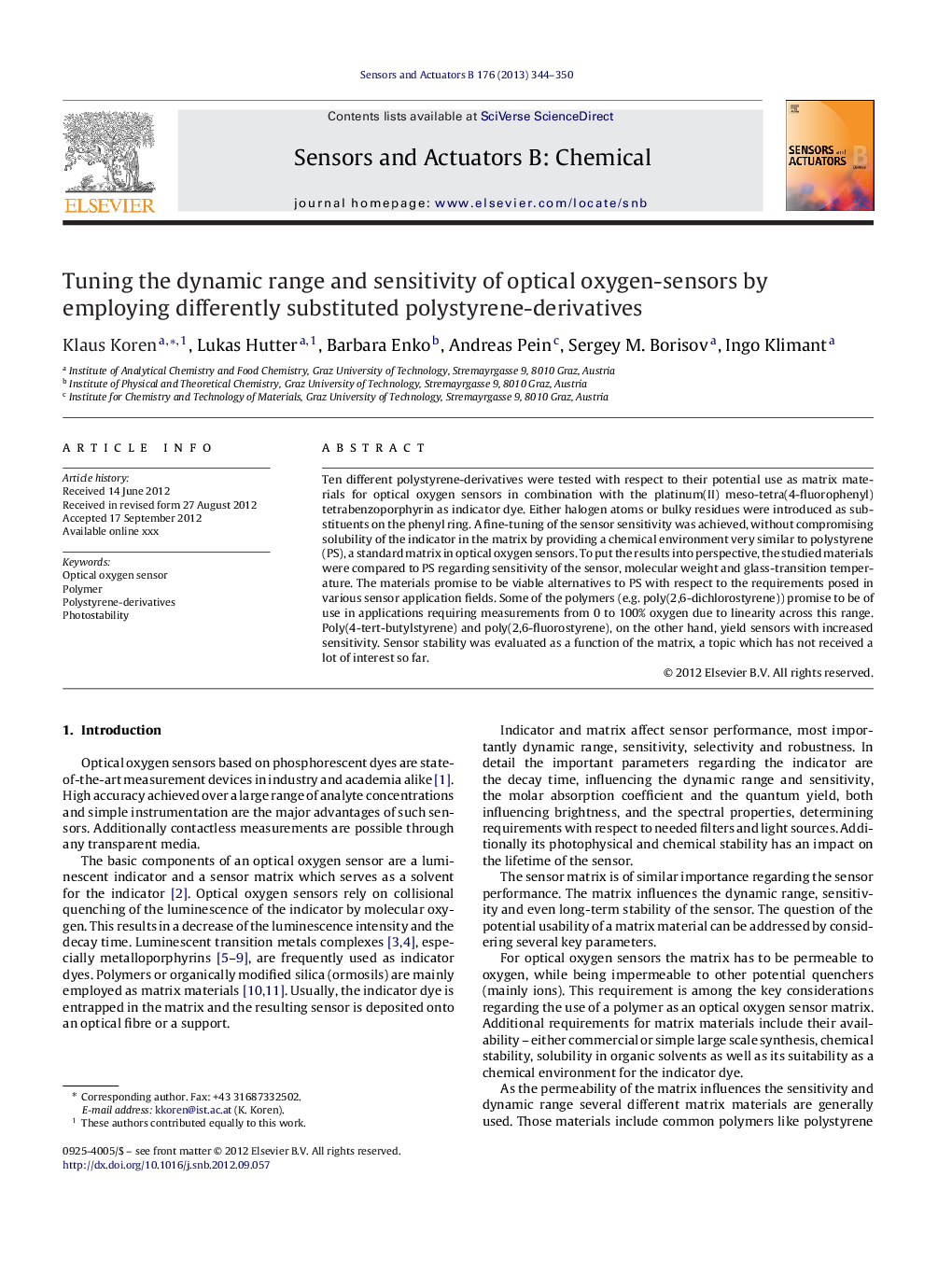| Article ID | Journal | Published Year | Pages | File Type |
|---|---|---|---|---|
| 7148992 | Sensors and Actuators B: Chemical | 2013 | 7 Pages |
Abstract
Ten different polystyrene-derivatives were tested with respect to their potential use as matrix materials for optical oxygen sensors in combination with the platinum(II) meso-tetra(4-fluorophenyl)tetrabenzoporphyrin as indicator dye. Either halogen atoms or bulky residues were introduced as substituents on the phenyl ring. A fine-tuning of the sensor sensitivity was achieved, without compromising solubility of the indicator in the matrix by providing a chemical environment very similar to polystyrene (PS), a standard matrix in optical oxygen sensors. To put the results into perspective, the studied materials were compared to PS regarding sensitivity of the sensor, molecular weight and glass-transition temperature. The materials promise to be viable alternatives to PS with respect to the requirements posed in various sensor application fields. Some of the polymers (e.g. poly(2,6-dichlorostyrene)) promise to be of use in applications requiring measurements from 0 to 100% oxygen due to linearity across this range. Poly(4-tert-butylstyrene) and poly(2,6-fluorostyrene), on the other hand, yield sensors with increased sensitivity. Sensor stability was evaluated as a function of the matrix, a topic which has not received a lot of interest so far.
Related Topics
Physical Sciences and Engineering
Chemistry
Analytical Chemistry
Authors
Klaus Koren, Lukas Hutter, Barbara Enko, Andreas Pein, Sergey M. Borisov, Ingo Klimant,
